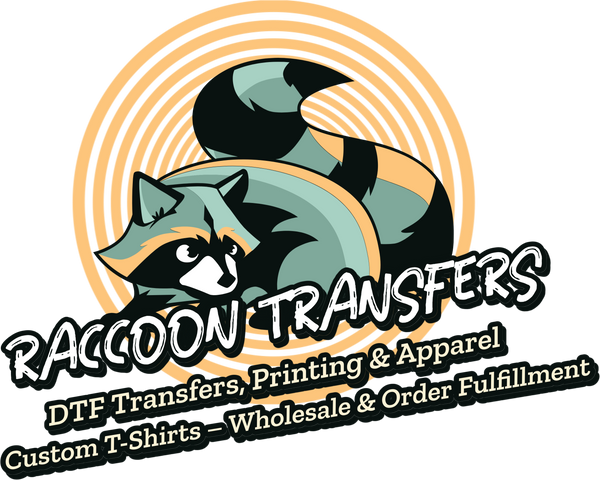How To Use Heat Transfer Paper: A Step-by-Step Guide
Share
In the world of personalized apparel and creative DIY projects, heat transfer paper is a game-changer, enabling individuals and businesses to print custom designs on various fabrics. This comprehensive guide will equip you with all the knowledge and techniques necessary to master the use of heat transfer paper, ensuring your designs are vibrant and long-lasting.

Introduction to Heat Transfer Paper
Heat transfer paper has revolutionized the customization industry, allowing for intricate designs to be easily transferred onto fabric. It plays a crucial role in industries ranging from fashion to promotional products, contributing to a significant part of the $25 billion global printing industry. With growing demand for unique and personalized items, understanding how to effectively use heat transfer paper can open up numerous creative and professional avenues.
Understanding Heat Transfer Paper
Heat transfer paper is specially coated to accept printed designs, which can then be transferred onto various surfaces using heat. Available in different types, such as inkjet and laser transfer papers, each serves specific purposes depending on the fabric and printer type. The choice of paper depends on your project needs, type of fabric, and the printing equipment available.
Types of Heat Transfer Paper
- Inkjet Transfer Paper: Suitable for inkjet printers, ideal for light and dark fabrics.
- Laser Transfer Paper: Designed for laser printers, known for sharp images and durability.
- Vinyl Transfer Paper: Used with cutting machines, perfect for durable and vibrant designs.
|
Paper Type |
Printer Compatibility |
Best For |
|
Inkjet Transfer Paper |
Inkjet Printers |
Light and Dark Fabrics |
|
Laser Transfer Paper |
Laser Printers |
Sharp and Durable Prints |
|
Vinyl Transfer Paper |
Cutter Machines |
Bold and Long-lasting Designs |
Preparing Your Design
The success of your project heavily relies on the design you choose. Ensure that your design is not overly complex, as fine details can be lost during the transfer process. Use high-quality images and software to create or edit your design.
Design Tips
- Use high-resolution images for clear, sharp designs.
- Consider color contrasts to ensure visibility on the fabric.
- Avoid intricate details that may not transfer well.
Printing on Heat Transfer Paper
Once your design is ready, the next step is to print it on the heat transfer paper. Make sure to adjust your printer settings to suit the paper type. If using an inkjet printer, select the photo or best quality setting. For laser printers, adjust the settings to accommodate the thickness of the transfer paper.
Printer Settings
- Ensure the correct paper type is selected in the printer settings.
- Use the highest quality print setting for the best results.
- Check if your design needs to be mirrored, especially for text.
Preparing the Fabric
Before applying the design, prepare the fabric by washing and ironing it. This ensures that there are no wrinkles or residues that could affect the adhesion of the transfer.
Fabric Prep Steps
- Wash the fabric to remove any sizing or finishes.
- Iron the fabric to eliminate all wrinkles.
- Ensure the surface is completely dry before the transfer process.
Application and Transfer Process
With your design printed and fabric ready, it's time to transfer your design using heat, usually from a heat press or an iron. The temperature and duration settings are crucial for the transfer's success.
Heat Process Guidelines
- Preheat your heat press or iron according to the transfer paper instructions.
- Place the printed transfer paper onto the fabric with a Teflon sheet to protect the design.
- Apply firm pressure and keep the heat even across the design.
Post-Transfer Care
Proper care after the transfer can greatly extend the longevity of your design. Always follow manufacturer instructions for washing and caring for the completed garment to maintain the vibrancy of the print.
Care Tips
- Wait at least 24 hours before washing the garment.
- Wash the fabric inside out in cold water to protect the design.
- Avoid bleach and harsh detergents.
Common Mistakes and How to Avoid Them
Even seasoned crafters can encounter issues during heat transfers. Knowing common pitfalls can help you avoid them and achieve the best results possible.
Common Errors
- Using the wrong paper type for the fabric or printer.
- Incorrectly setting up the heat press or iron.
- Poor quality images resulting in blurred prints.
Opportunities and Challenges in the Heat Transfer Industry
The demand for customized apparel continues to grow, driven by consumer preferences for unique fashion and promotional products. However, the market faces challenges, including environmental concerns about materials and the need for continuous innovation to meet consumer expectations. Industry reports suggest that the market for heat transfer printing is expected to grow at a CAGR of approximately 5% through 2025, emphasizing the need for sustainable practices and technological advancements.
Advanced Techniques and Tips
For those looking to refine their skills further, exploring advanced techniques such as layering designs or experimenting with different materials can enhance the quality and uniqueness of your heat transfers.
Advanced Techniques
- Layering transfers to create complex designs.
- Using specialty papers for unique textures and effects.
- Experimenting with mixed media for striking results.
Conclusion
Heat transfer paper opens up a world of possibilities for personalization and creativity. By understanding the process, materials, and tools involved, you can create stunning, bespoke designs that stand the test of time. This guide serves as a foundation, but continuous practice and exploration are key to mastering this versatile and rewarding technique.
FAQs
Contact Us
If you have any further questions or require assistance regarding heat transfer papers, feel free to visit Raccoon Transfers for more information or contact us through the details provided on our website.
